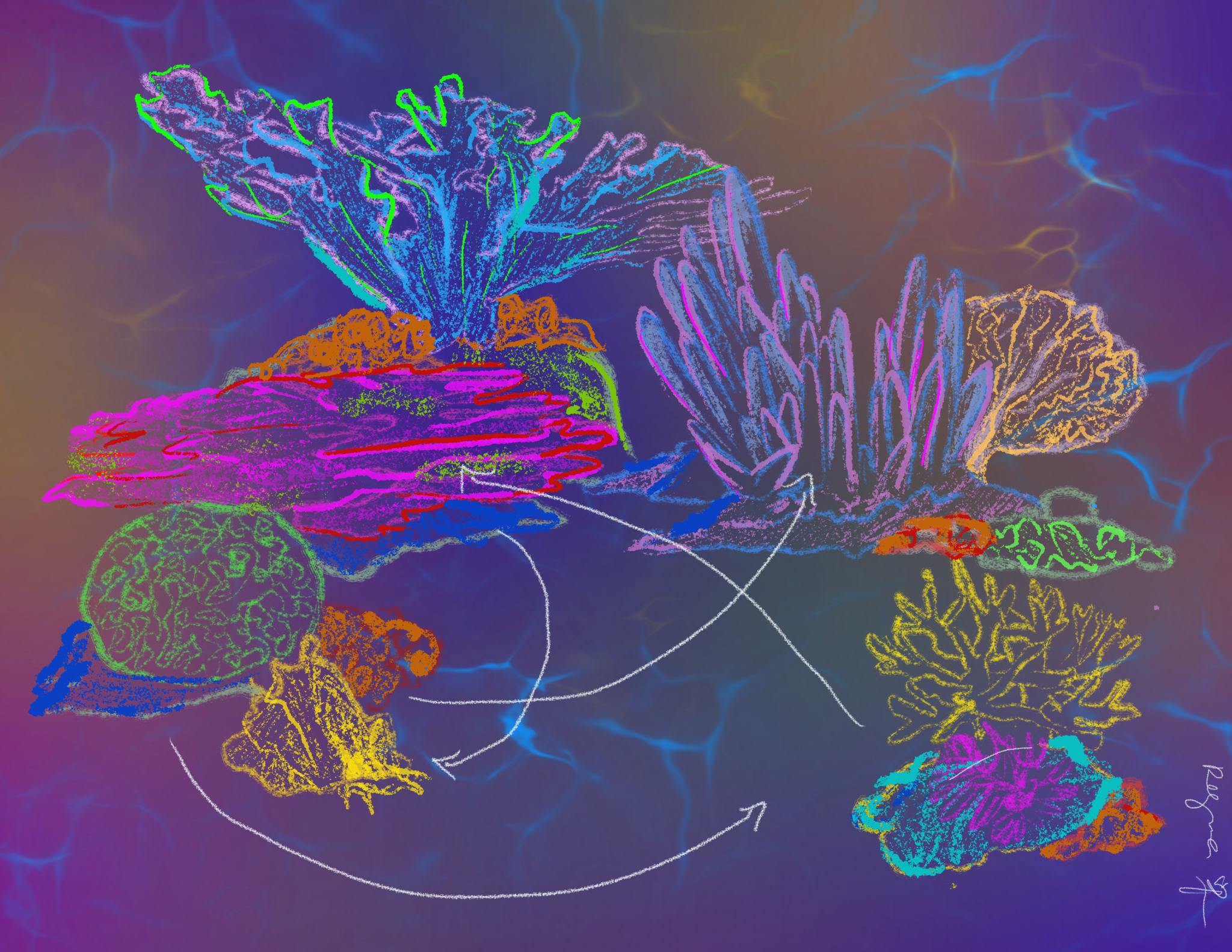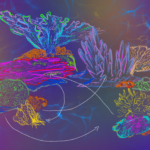
Regina Sung, Contributing Illustrator
Researchers have found that the physical remains of soft-bodied species are not accounted for in fossil records, implying that many current models of ancient food webs are flawed.
Food webs map vast networks of interconnected ecological systems based on feeding interactions and number of predators, as well as its stability and structure. Jack Shaw GRD ’23, a graduate student in the Earth and Planetary Sciences Department and lead author of the study, along with researchers at the Santa Fe Institute and other institutions, wanted to use food webs to understand how preservational biases of fossil between different species and can reveal certain characteristics of an ecosystem, such as how the number of records affect gathered data on food webs. By using a network approach, they were, in fact, able to find significant gaps within these systems. The study was published on Jan. 14 in the Cambridge University Press.
“With food webs, you are looking at how the energy is transferring through the system, and that energy is really important for understanding how healthy the system is and how stable it is,” Shaw said. “By doing food web analysis you are able to quantify these systems.”
According to Shaw, knowing how energy flows within a food web system can indicate its resistance to perturbations and stress, and by quantifying these features, researchers can predict how a given system will look in the future. But a gap in the fossil record has led to an incomplete understanding of ancient ecological systems.
Shaw’s study found that the exclusion of soft-bodied organisms from ancient food webs, due to their lack of preservation in fossil records, have affected experts’ current understanding of these systems, as well as the validity of their models for these networks. Due to the gaps in fossil data, these models can appear less stable and more sensitive to significant environmental changes, and often appear to have fewer predators.
“The fact that selective information loss (due to a lack of preservation of certain elements) does change the interpretations we can make from ancient data means that the interpretations we make from an inherently incomplete archaeological record are likely affected in comparable ways,” Emily Coco, a PhD candidate at New York University and a contributor to the study, wrote in an email to the News.
Shaw explained that the study of ancient foods webs precedes the 1800s when scientists started to look at ancient food webs to see how they coped with added environmental stress. But in modern food web theory, scientists are now interested in thinking about how these ancient webs might be depictions of modern systems.
There are some ancient organisms that have not been preserved in the fossil record, so to account for this incomplete understanding of food webs, Shaw and his colleagues used a pre-existing method, known as a network approach, to predict the gaps in fossilized ancient ecological systems.
“[A network approach] gives you a mathematical backbone, a quantitative framework, to be able to think about how many communities interact with each other,” Shaw said. “It allows you to quantify something where there is a lot going on.”
A network approach simplifies a given food web into nodes and links, where the nodes represent different species and the links represent the feeding relationships between them. This simplification makes it so that researchers do not have to look at all species individually, but rather they can look at a large sample of species and examine their connections to each other, according to Shaw. They can also use this model to see how elements of the network change overtime and react to environmental stressors.
Jennifer Dunne, senior author of the study and vice president for Science at the Santa Fe Institute, told the News that by looking at food webs from the past, scientists can understand how modern food webs can fall apart or come together after major events. They are also able to observe how food webs tend to reorganize as new species evolve and are introduced to the system over time.
“Jack has provided us the tools where now people like Jack and other paleobiologists can start to compile data from the more partially preserved assemblages and then basically be able to understand what they should look like even though a bunch of species are missing,” Dunne said.
Shaw said that now that researchers know where the cracks are in ancient food webs, they want to apply this newfound understanding to properly reconstruct these food webs, as opposed to merely analyzing them as experts in the field have typically done. An accurate reconstruction of these webs will allow researchers to see how they have changed over the entire course of animal history, which spans approximately 500 million years.
The paper started as a project at the Santa Fe Institute’s Complex Systems Summer School in 2019.
Nicole Rodriguez | nicole.rodriguez.nr444@yale.edu








